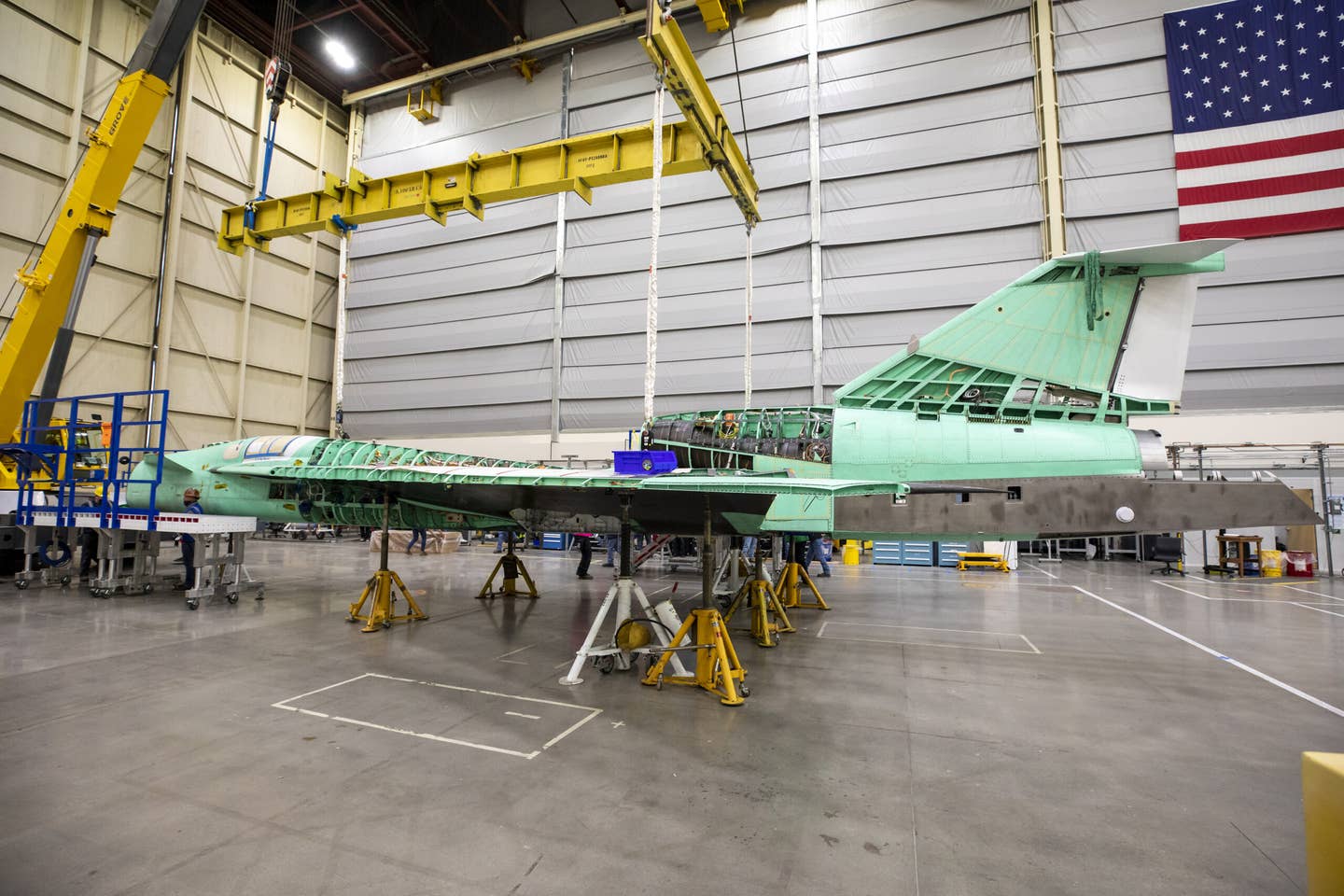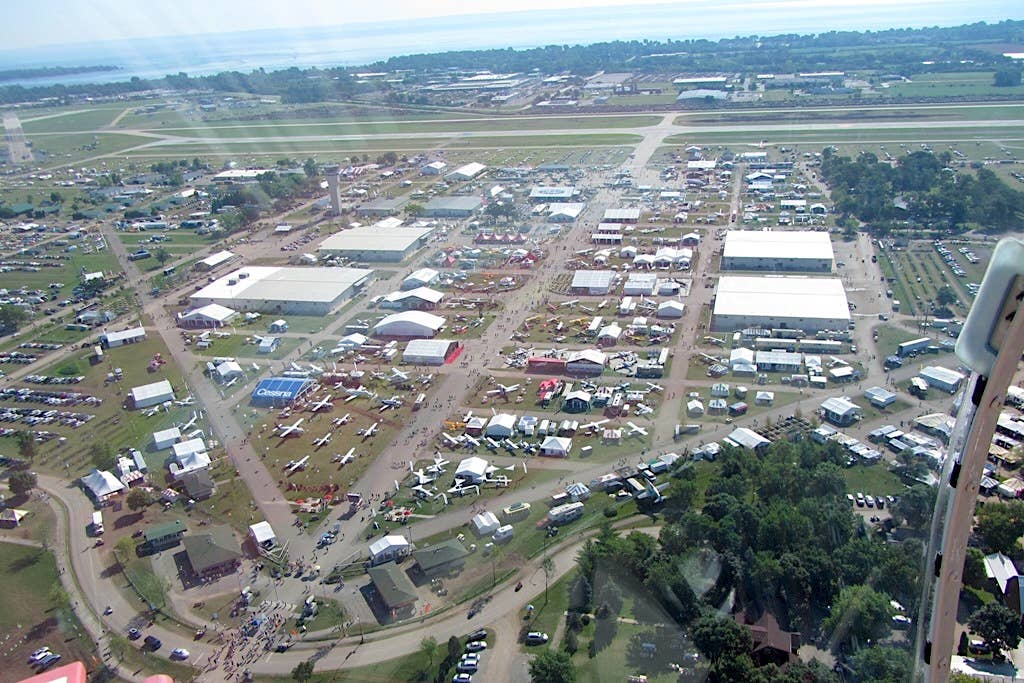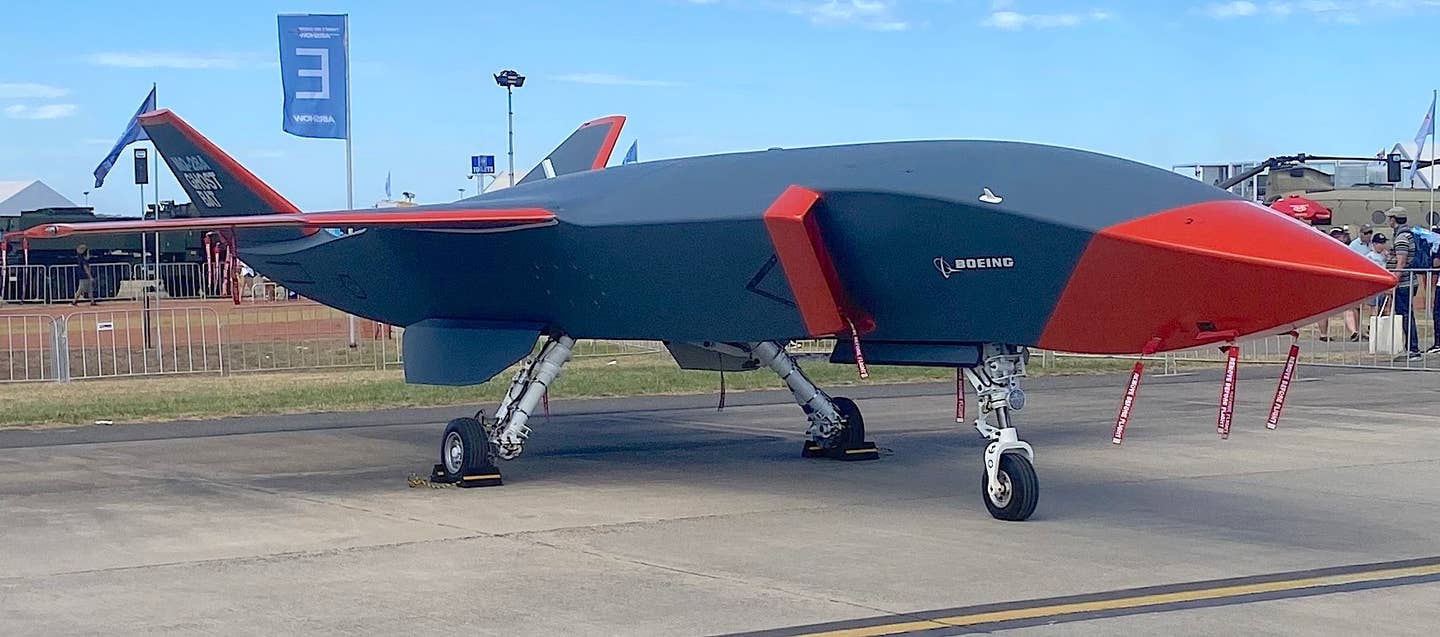NASA Supersonic X-Plane Stands Alone
NASA and Lockheed Martin have removed the X-59 Quiet SuperSonic Technology (QueSST) research aircraft from its jig system and are moving toward final assembly, according to a recent announcement from…

Image: Lockheed Martin/Garry Tice
NASA and Lockheed Martin have removed the X-59 Quiet SuperSonic Technology (QueSST) research aircraft from its jig system and are moving toward final assembly, according to a recent announcement from NASA. Part of the agency’s low-boom flight demonstration mission, the goal of the X-59 QueSST design is to reduce “the loudness of a sonic boom to a gentle thump to people on the ground.” Construction on the aircraft began in 2018 at Lockheed Martin Skunk Works in Palmdale, California.
“Most of the preparation for the X-59's construction involved more than a decade’s worth of research on quiet supersonic technology,” NASA said. “NASA’s quiet supersonic mission plans to bring all of the science and technology developed during those years into the spotlight.”
Once final assembly is complete, the X-59 will be moved to Lockheed Martin’s Fort Worth, Texas, facility for structural tests. The aircraft is expected to fly for the first time next year. Noise testing is slated to begin in 2023 followed by a series of flights to gauge community responses to the aircraft’s sound in 2024.






